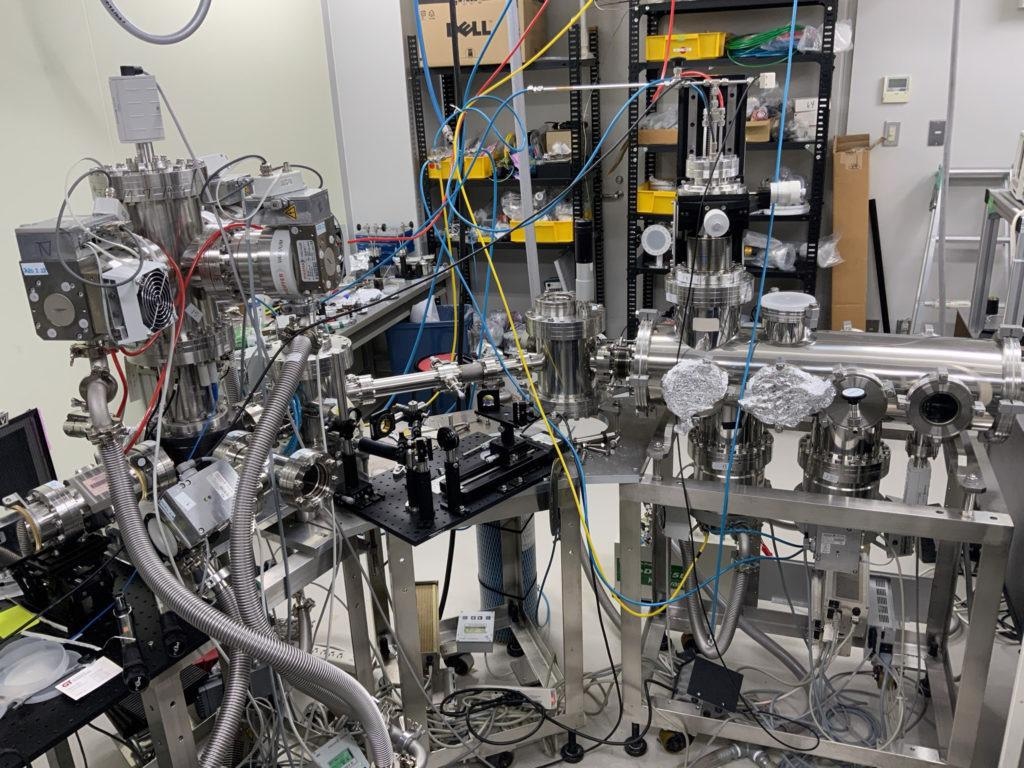Feb 4 2021
A new, sophisticated laser-based technique has enabled scientists to observe the live decomposition of a pollutant into atmospheric nitrous acid, which plays an essential role in the development of photochemical smog and ozone.
 Extreme ultraviolet femtosecond pulse light source and photoelectron spectrometer, key instruments used in the experiment. Image Credit: Taro Sekikawa.
Extreme ultraviolet femtosecond pulse light source and photoelectron spectrometer, key instruments used in the experiment. Image Credit: Taro Sekikawa.
As explained by Hokkaido University scientists in The Journal of Physical Chemistry Letters, the new technique could find an extensive range of applications.
Nitrophenols are a kind of fine particulate matter that occur in the atmosphere, developing due to forest fires and fossil fuel combustion. Scientists propose that light interacts with nitrophenols and disintegrates them into nitrous acid. It is well known that atmospheric nitrous acid produces the hydroxyl radicals that cause ozone formation.
Excessive ozone and nitrogen oxides result in the formation of an atmospheric haze known as photochemical smog, which can lead to respiratory illnesses. So far, there has been no proof for the decomposition of nitrophenol into nitrous acid with the help of sunlight.
Applied physicist Taro Sekikawa from Hokkaido University and his team have developed a new probing method to observe the process live. Then, they compared their measurements with theoretical quantum chemistry calculations.
Our study showed that irradiation of o-nitrophenol with sunlight is one of the direct causes of nitrous acid production in the atmosphere.
Taro Sekikawa, Applied Physicist, Hokkaido University
The researchers created a sophisticated laser-based technique in which nitrophenol is excited with a 400 nm-wavelength laser light and very short, very fast pulses of ultraviolet light are further shone on it to observe what takes place.
Particularly, they made use of extreme UV light, which has very short wavelengths, shone in femtoseconds, and lasting a millionth of a billionth of a second. The entire process quantifies the molecular changes and energy states occurring as the nitrophenol compound gets decomposed over time.
The researchers discovered that nitrous acid starts to develop 374 fs after the nitrophenol is initially excited by light. During the decomposition process, the shape of the nitrophenol molecule gets distorted by light irradiation and variations in its energy states, eventually resulting in the development of nitrous acid.
Photoelectron spectroscopy with extreme ultraviolet light is expected to have a wide range of applications as a method for measuring chemical reactions. It could be used, for example, to understand the mechanism by which ultraviolet rays inactivate viruses at the molecular level, and to understand other chemical reactions that take place in the atmosphere.
Taro Sekikawa, Applied Physicist, Hokkaido University
The study was funded by the Ministry of Education, Culture, Sports, Science and Technology (MEXT) Quantum Leap Flagship Program (Q-LEAP; JPMXS0118068681), Japan Science and Technology Agency (JST) Core Research for Evolutional Science and Technology (CREST; JPMJCR15N1, JPMJCR1902) and KAKENHI (19H01814), and the Photoexcitonix Project in Hokkaido University.
Journal Reference
Nitta, Y., et al. (2021) Real-Time Probing of an Atmospheric Photochemical Reaction by Ultrashort Extreme Ultraviolet Pulses: Nitrous Acid Release from o-Nitrophenol. The Journal of Physical Chemistry Letters. doi.org/10.1021/acs.jpclett.0c03297.